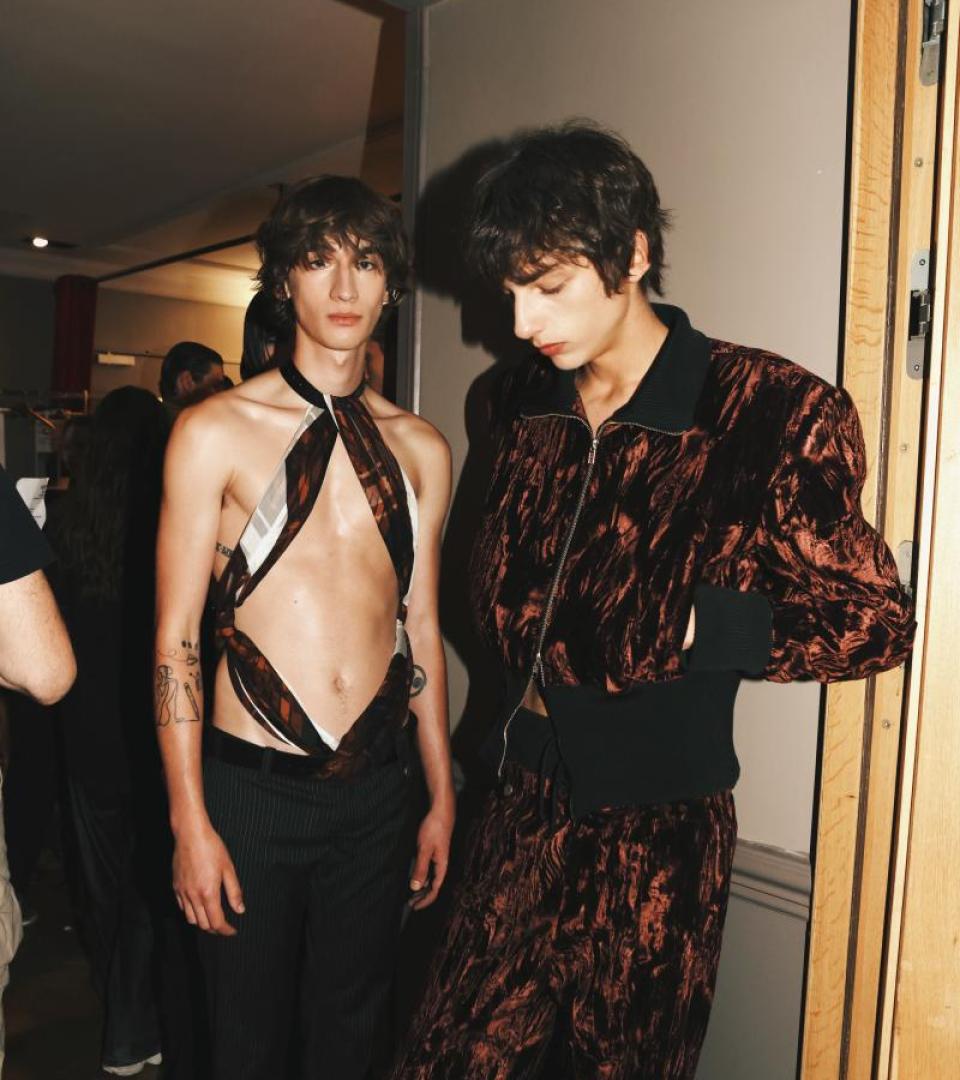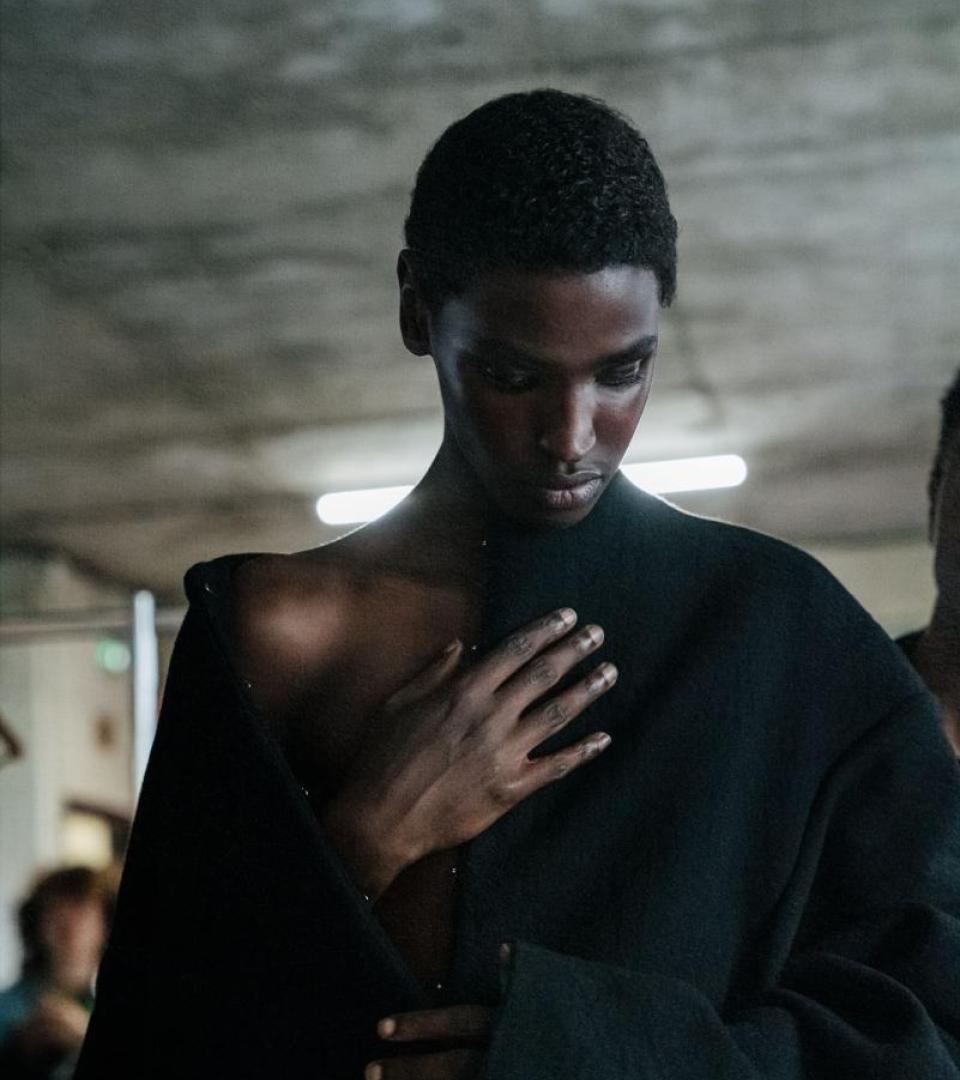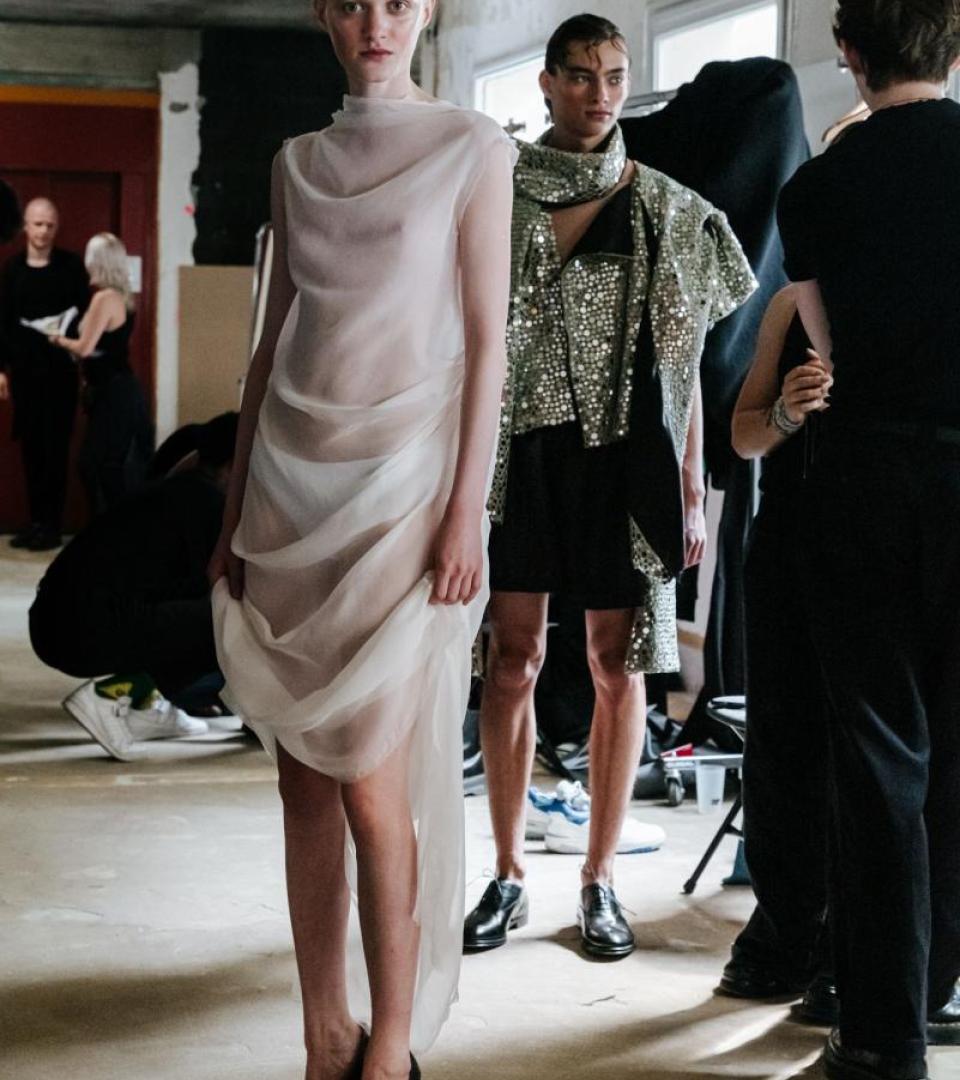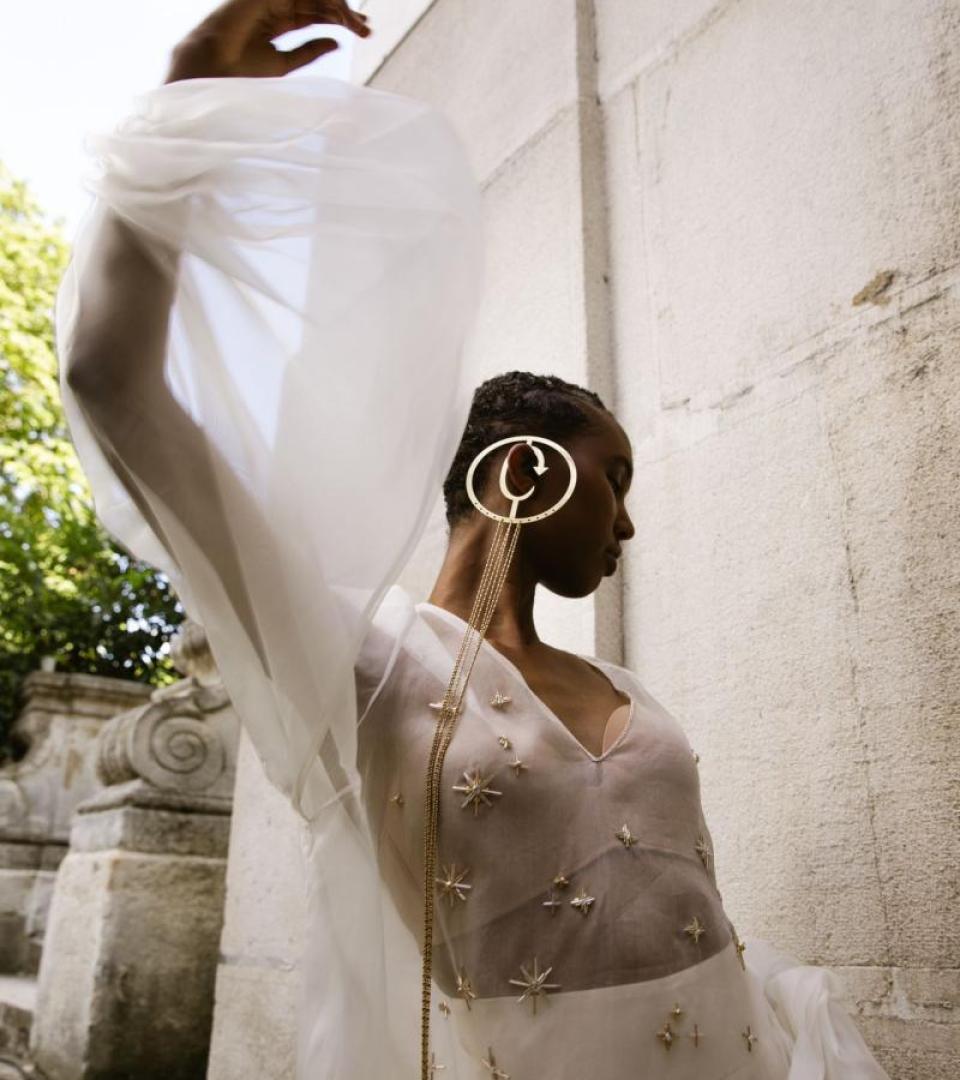Rahul Mishra’s Couture Cosmos
You explored notions of the cosmos — a very am ambitious theme. Can you tell us a little more how you translated this into your creations?
Indeed, Cosmos is a vast concept to borrow from. And I believe that it’s majorly beyond our imagination as limited beings. Realising this collection has been an ambitious task, but also a delight. This reason we borrow from this profound quote from the Puranas, “Yat Pinde Tat Brahmande” which translates to: “What surrounds you, lies within you” and vice versa. I had been watching this beautiful documentary on Netflix called ‘Cosmos’ in which Neil deGrasse Tyson contemplates that the cosmos stretches across billions of light years, so you may be looking at stars in real time, that may have faded long ago. He also inspires one to imagine an entire multiverse in a water droplet that is made of tiny atoms. Rather than looking up, I started looking down for inspiration – as in, we’ve been able to look beyond the stars for our cosmos. The collection explores a lot of stories and thoughts; but in a nutshell, seeks to incite curiosity and a sense of fantasy.
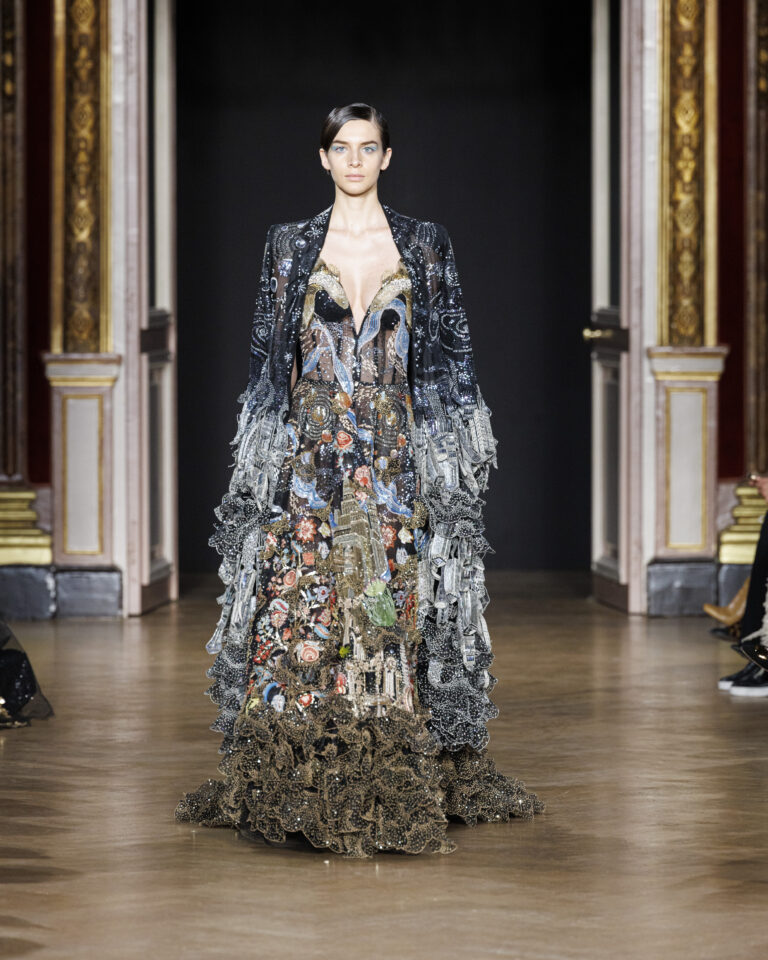
What would you like us to know about the actual pieces this season? What are some of the techniques that you used?
This season we worked on multiple approaches to create embroidery; and within the embroidery, we created multiple levels, so that from far away, it looks something else. As you get closer and closer, you keep discovering more layering of details in some of our 3D embroideries. We have also casted metal ornaments such as birds, ladybugs, jellyfish, and starfish. We did a lot of patternmaking with different silhouettes. Every outfit can look like the cosmos and that is how different techniques were used. The essence of couture is craftsmanship, and you keep yours in India.
How have you seen the savoir faire evolve — or how have you supported the evolution of this tradition?
For me it is really important to know the purpose of creating couture. One purpose is it creates beautiful storytelling almost close to the heart. Another is craftsmanship and the workers who are dependent on what we create. Every season where I think about creating different techniques and embroideries. I need to align my universe in tune with their abilities and their joy, because for us, couture becomes a beautiful medium which allows us to support 1500-plus families in India. This creates a link between two universes: one is people working in remote villages that might not even be found on Google maps and this is somehow brought to the beautiful city called Paris where couture was born. This is inclusivity: the way that people who are working on those garments are gifted with artistry and their participation is a far more purposeful concept. In that way couture becomes far more important to me personally and it allows my craftsman to be their own artist and at the same time take care of their families.
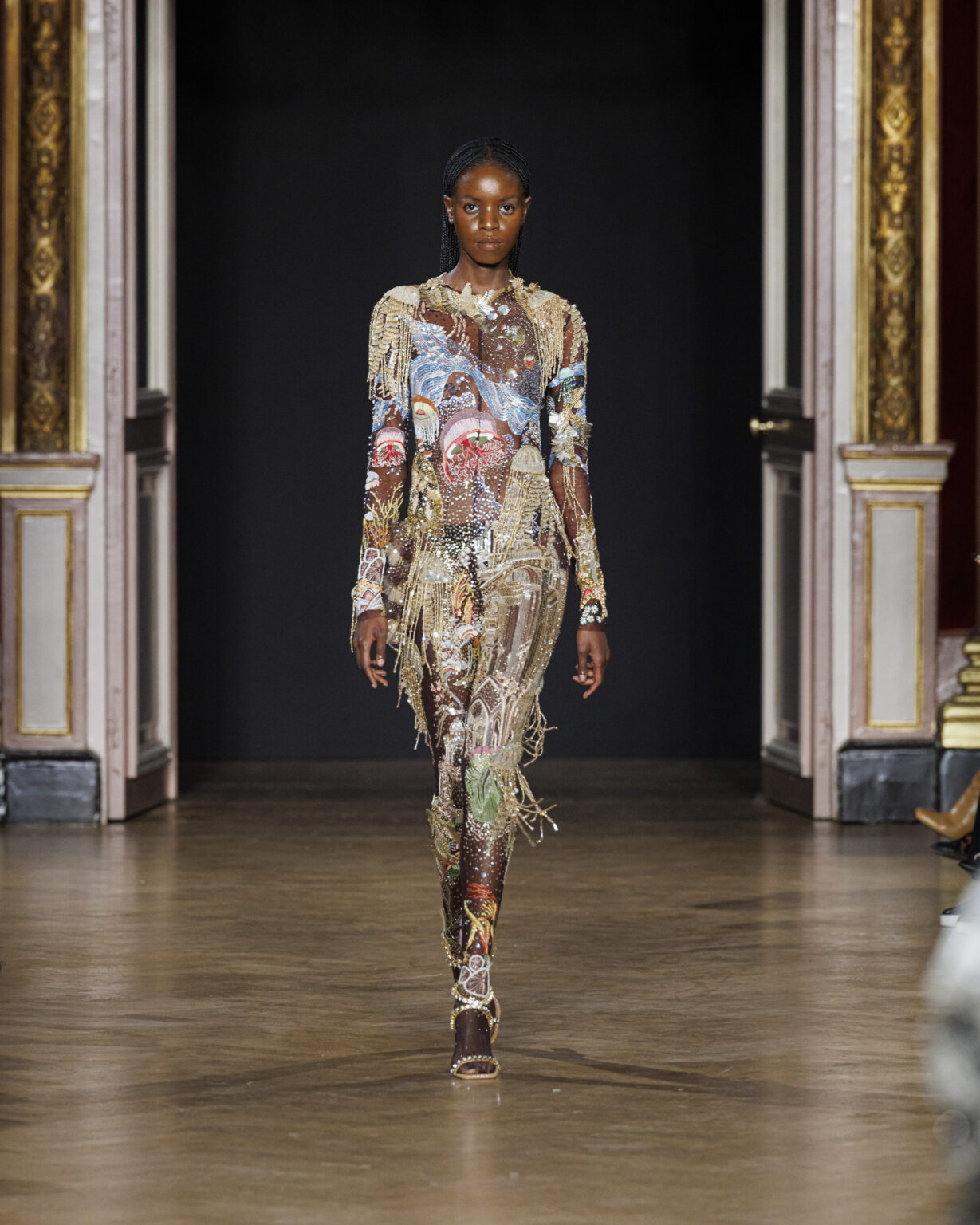
Many of your silhouettes look quite contemporary. How do you think of couture for today?
I think the couture landscape is ever evolving, so there has to be lot of room for experimentation, a lot of room for new silhouettes, new ideas. We typically work like an art lab in our studio where we create new shapes, and we work extensively on patternmaking. We are creating modern pieces, wearable by today’s client who is busy and who is powerful. I think that’s important for modern life. We also tried to create separates, which can go really well with simple black pants. Couture should not be meant for just for very special occasions; some of the pieces from this collection can be worn quite regularly.
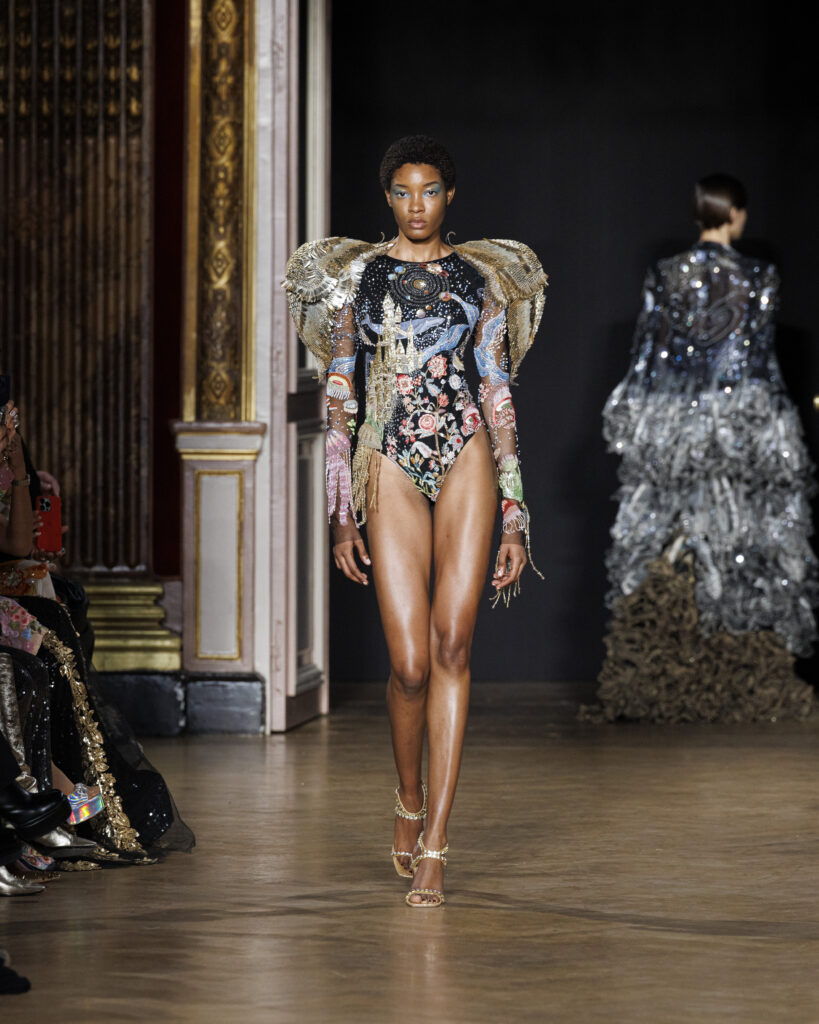
Why, in your opinion, is it important that fashion is always evolving, that it never stays the same?
In my opinion, fashion is something which always moves forward; this is what keeps it exciting. But at the same time, I feel like this evolution should also take people along, and not leave anybody behind, especially our craftspeople. Craftspeople create everything, and if suddenly there’s new technology and machine innovation, they are left behind and the entire social system risks breaking down.
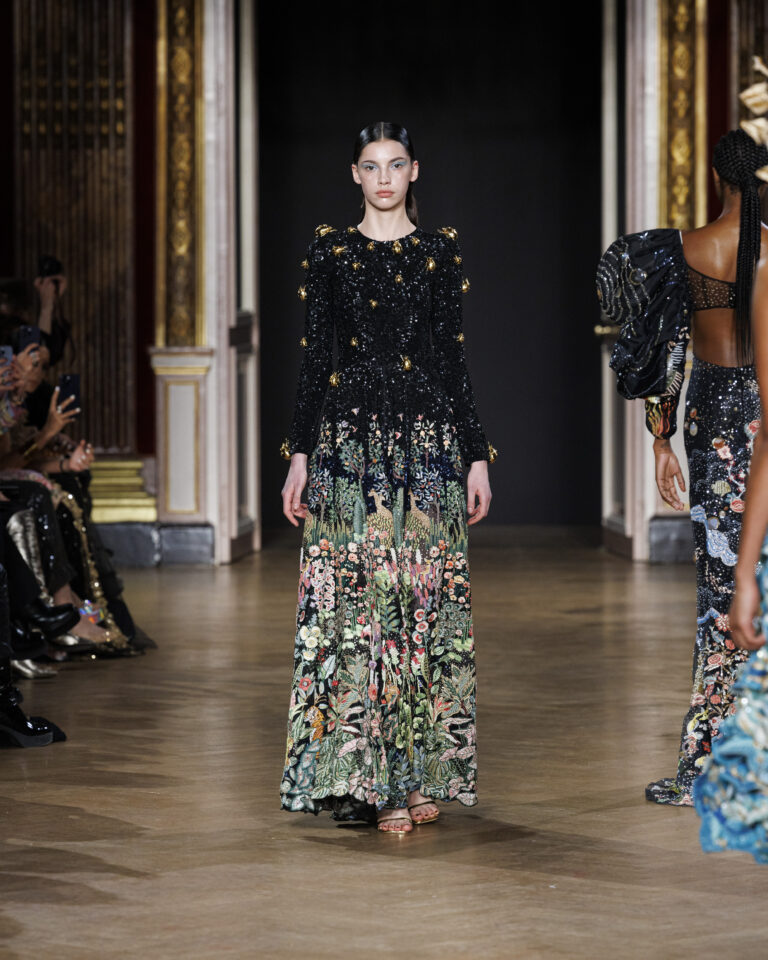
This interview has been lightly edited for length and clarity.
